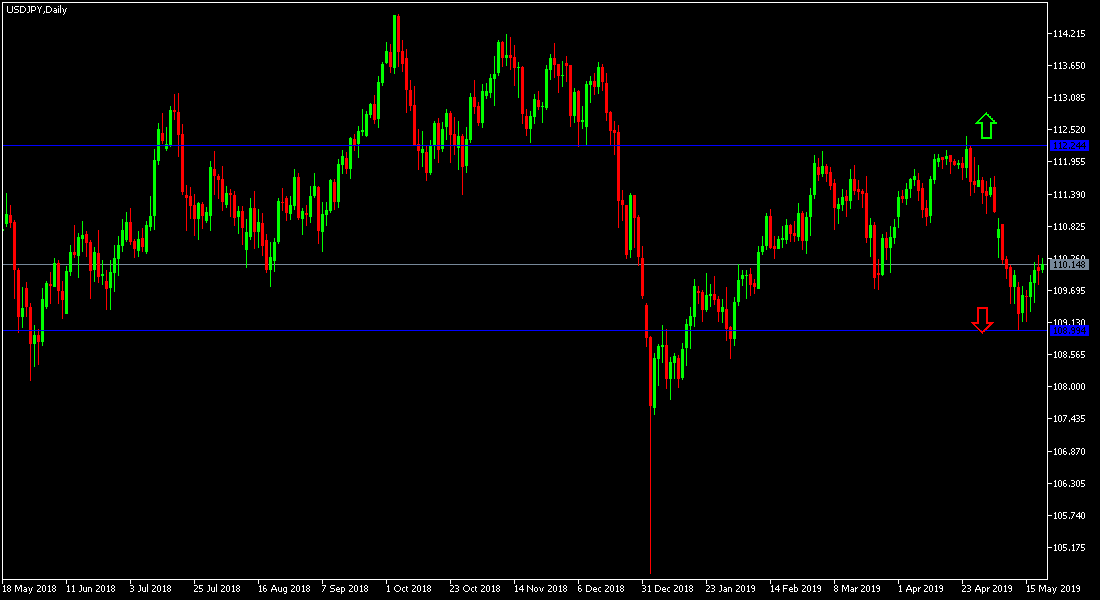The dollar and Japanese yen have been the most prominent as safe havens recently amid global trade tensions. Therefore, there is a balance in the USD/JPY performance establishing around 110.00 resistance at the time of writing, waiting for stronger catalysts. Japan's economic growth, contrary to expectations, remained strong in the first quarter of 2019 and expectations were for a strong slowdown. The latest pair losses reached the support level of 109.01 in early trading last week, the lowest in more than three months, with the growing trade tensions between the United States and China to impose more tariffs. Global trade war threatens the future of the world economy as a whole, and it was natural investors escape to safe haven led by the Japanese Yen. US retail sales fell more than expected negatively impacted the US dollar.
China responds to the United States by imposing new tariffs on US products worth $ 60 billion, after Trump carried out the threat and impose more tariffs on $200 billion of Chinese products despite the continued optimism of a close agreement between the two sides to end the trade war which threatens the world economy.
The US economy managed to add new jobs more than expected, the unemployment rate fell to its lowest level in 49 years and the average hourly wage rose.
The Federal Reserve Board kept the interest rate unchanged as expected, pointing out that it is unlikely to raise or lower interest rates in the coming months amid signs of renewed economic health while at the same time inflation is still unusually low.
We noted in the previous technical analysis that the daily chart clearly shows a new bullish consolidation zone for the pair and that this performance foreshadows the pair's upcoming move towards further gains or bearish correction due to the profit-taking operations.
Technically: As expected, the stability of the USD/JPY below the 110.00 level will increase the bearish momentum for the pair, and may be the following levels of support will be 109.30 and 108.70 and 107.80, respectively, which confirm the strength of the downward trend. On the upside, the nearest resistance levels are 110.25, 111.30 and 112.75, respectively. We still prefer to buy the pair from every bearish bounce.
In today's economic data, the economic calendar will focus on existing US home sales. The pair will be watched with caution and interest in renewed global geopolitical concerns, and Trump's internal and external policy.

